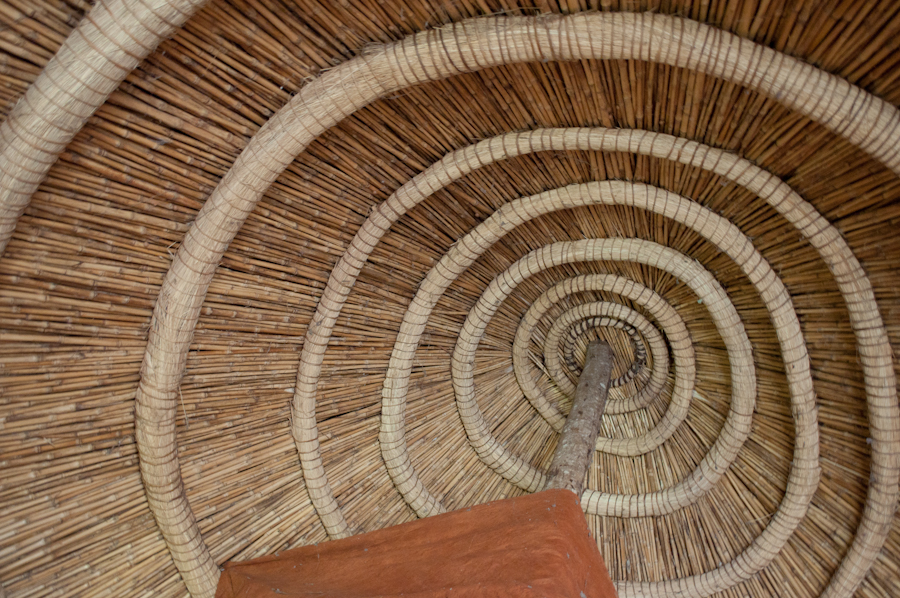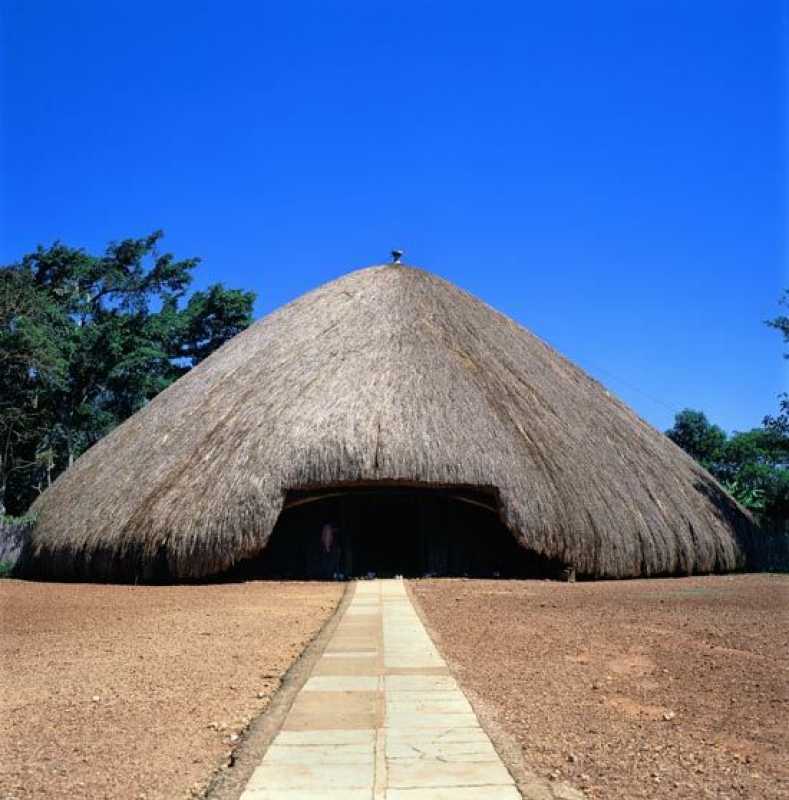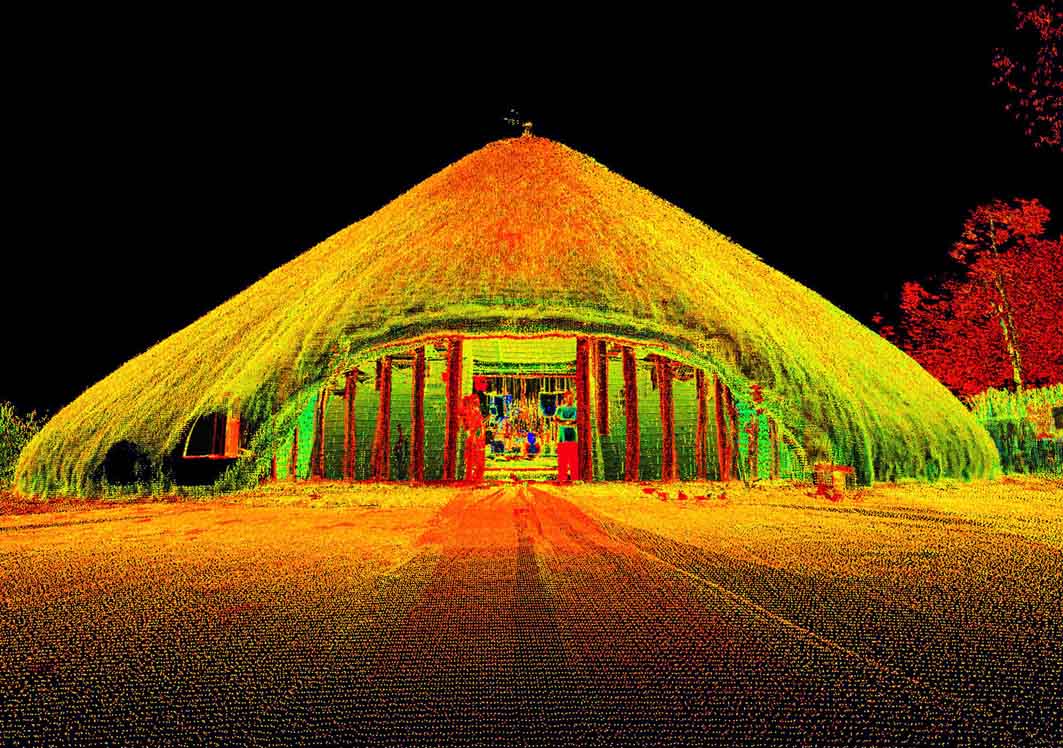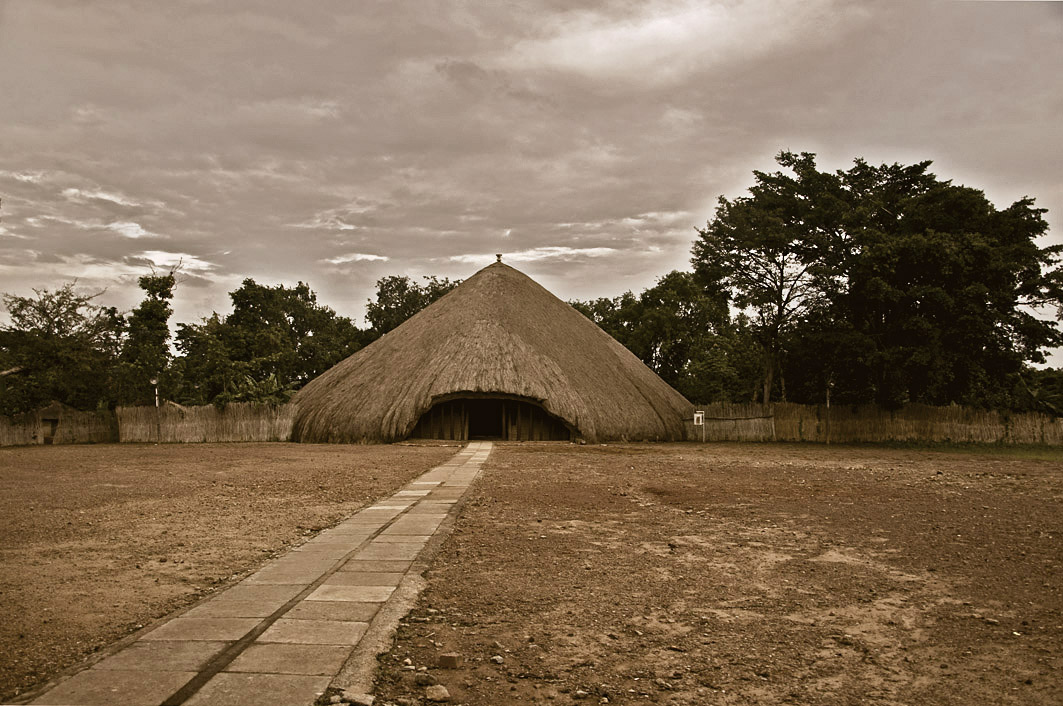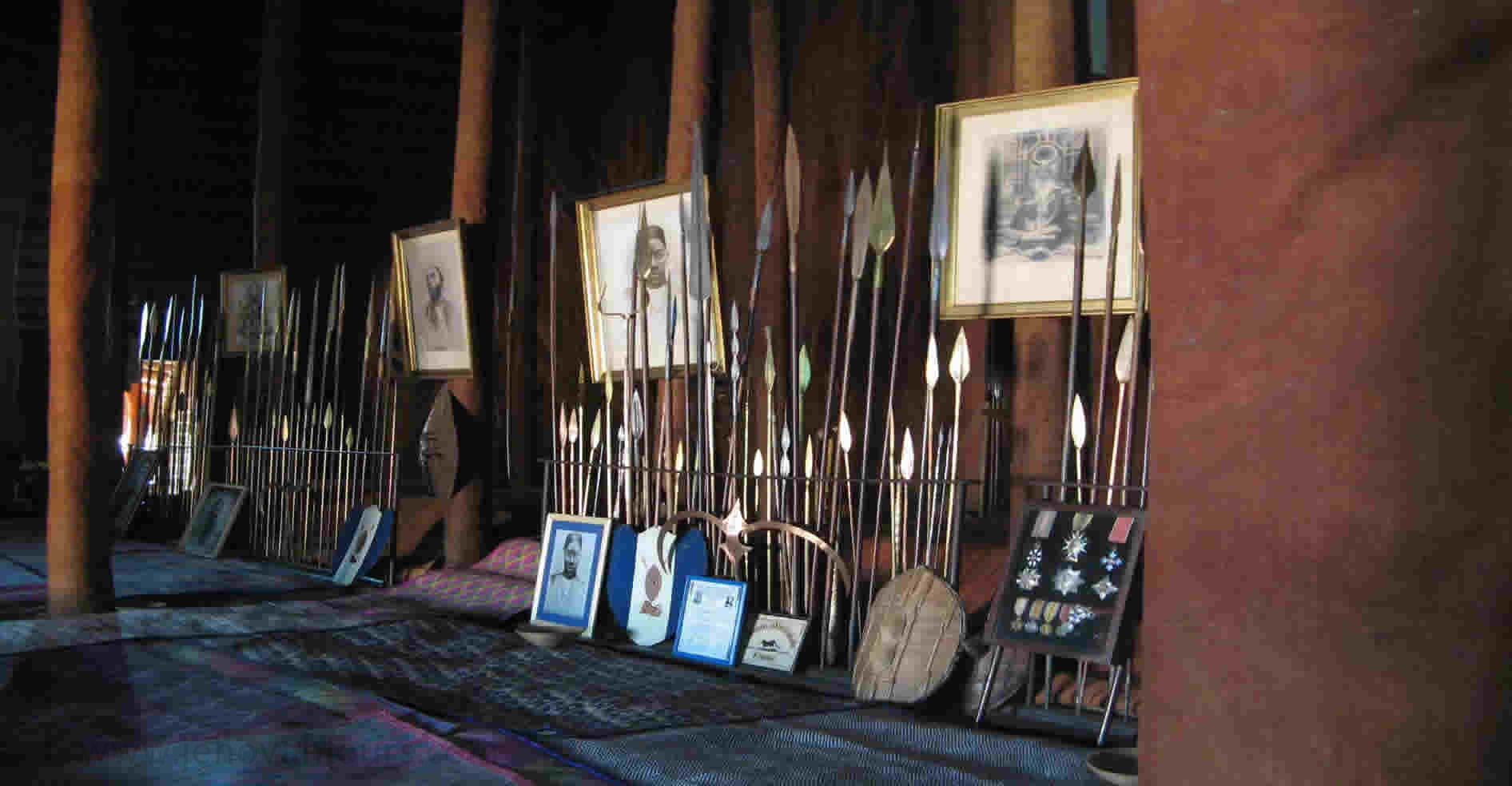The Tombs of Buganda Kings at Kasubi constitute a site embracing almost 30 ha of hillside within Kampala district. Most of the site is agricultural, farmed by traditional methods. At its core on the hilltop is the former palace of the Kabakas of Buganda, built in 1882 and converted into the royal burial ground in 1884. Four royal tombs now lie within the Muzibu Azaala Mpanga, the main building, which is circular and surmounted by a dome. It is a major example of an architectural achievement in organic materials, principally wood, thatch, reed, wattle and daub. The site's main significance lies, however, in its intangible values of belief, spirituality, continuity and identity.
The Kasubi site bears eloquent witness to the living cultural traditions of the Baganda. The spatial organization of the Tombs represents the best extant example of a Baganda palace/architectural ensemble. Built in the finest traditions of Ganda architecture and palace design, it reflects technical achievements developed over many centuries. The built and natural elements of the tombs are charged with historical, traditional, and spiritual values. It is a major spiritual centre for the Baganda and is the most active religious place in the kingdom.
The Baganda belong to the Bantu-speaking people and date their political civilization from about the 13th century AD. Today, the Baganda are the major ethnic group in Uganda. The present tomb structure dates to around 1882. Muteesa I became a very powerful Kabaka, the first to be influenced by foreign cultures. He adopted some Islamic religious practices learnt from ivory and slave traders from Zanzibar. He also showed interest in Europe after acting as host in 1862 to John Hanning Speke, the first European visitor. Some surviving artefacts reflect this pivotal period in local history when the Baganda were first exposed to Arab traders and European explorers.
When Muteesa 1st died in 1884 he was buried in his palace, Kasubi, establishing Kasubi as an important burial place of the Kabakas of Buganda. After independence in 1962 Muteesa II became president, with his own prime minister. Kasubi was stormed in 1966 and the president went into exile, but when he died in 1969 his remains were returned and buried at Kasubi in 1971. Four successive Kabakas of Buganda were therefore buried in the same tomb house at Kasubi, the building which is at the core of this World Heritage site. Each prince and princess who is a descendant of the four Kabakas is also buried there behind the main shrine.
Kabaka Ronald Mutebi II was crowned as the Kabaka of Buganda, and in 1997 the Kasubi tombs were returned to the Buganda kingdom. Buganda is today one of four kingdoms in Uganda.
The Kasubi Tombs site is situated on a hill within Kampala. It consists of three main zones: the main tomb area, located at the western end of the site on top of the hill; an area located behind the main tombs containing a number of buildings and graveyards; and a large area on the eastern side of the site used primarily for agricultural purposes.
The structure was constructed of wooden columns and invisible walls of fired brick. Beyond is a small courtyard containing a circular building with the royal drums.
The D-shaped main courtyard (Olugya) lies through a gap in a reed fence. This fence encloses the courtyard and links nine buildings, five of them houses for the widows of the Kabakas, the other four respectively a twins' house, two tombs, and a mortuary.
Beyond the Olugya is scattered a large number of buildings - houses, royal tombs and ones for agricultural purposes - and a royal cemetery. The whole area is sacred and is not open to visitors.
Since 1938 the building has suffered several processes of restoration and modification, primarily to meet threats of structural failure. It was completely reconstructed in 1938-40, when modern materials were introduced, such as some concrete columns. During the 1990s, changes incurred by most of the buildings have slightly changed the architectural value of the site; which suffers badly from rain, drainage problems, and termites, with a constant threat of fire.
Most of the smaller buildings show deficiencies. One building burnt down in 1998 has been rebuilt but is without a thatch roof for lack of funds. The original reed fence around the whole site has long since disappeared; the living fence of bark-cloth trees around the site has suffered quite badly as an obvious target in the endless search for firewood. The site has, nevertheless, to an extent been preserved out of fear and respect for its sacred and religious nature.





